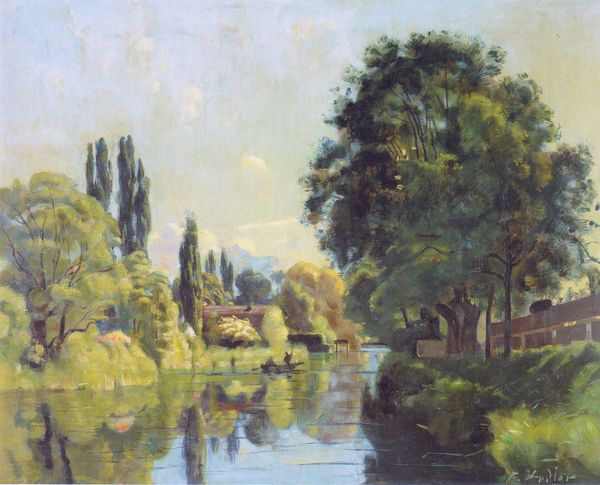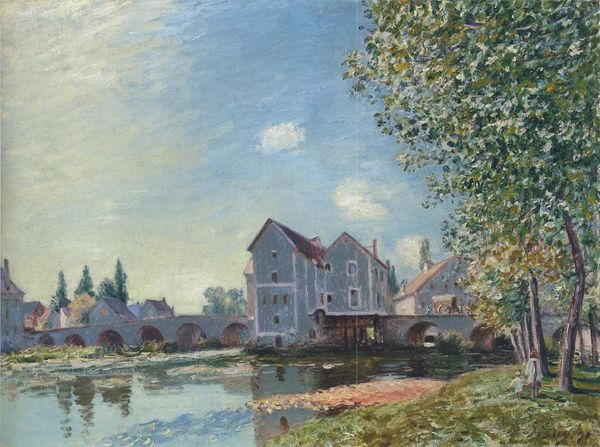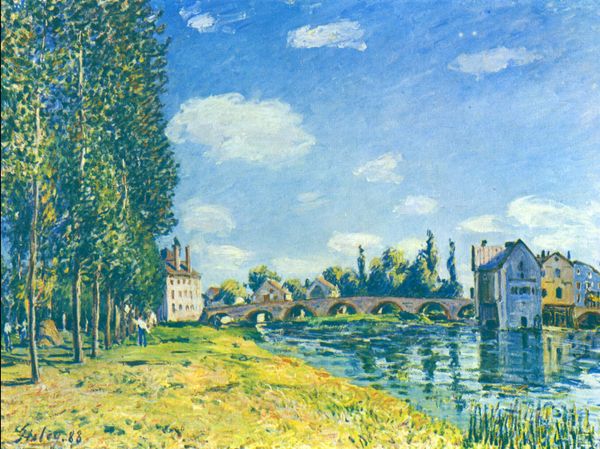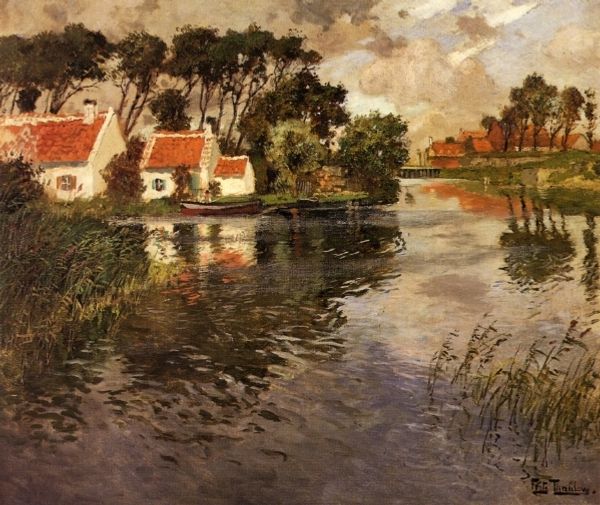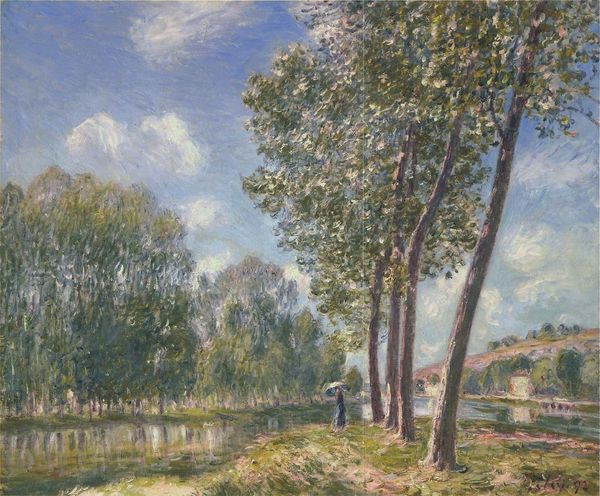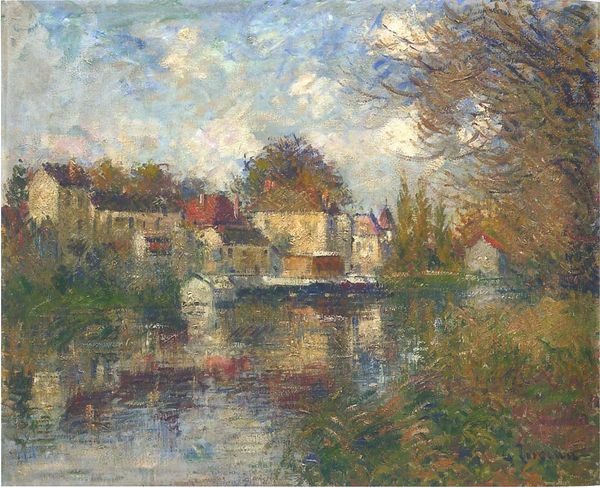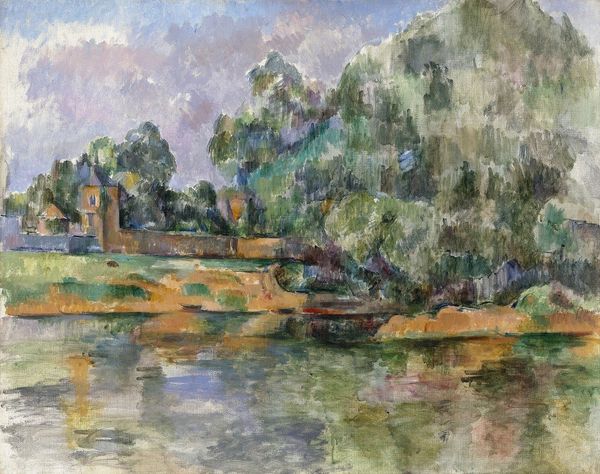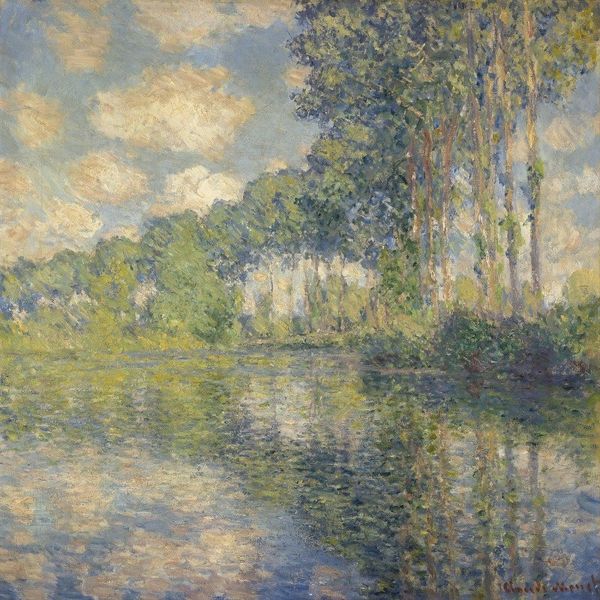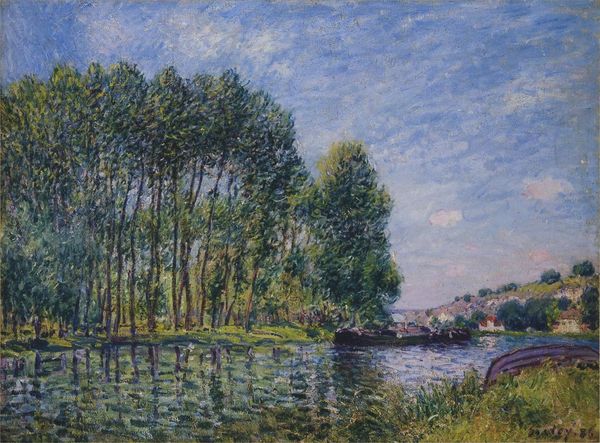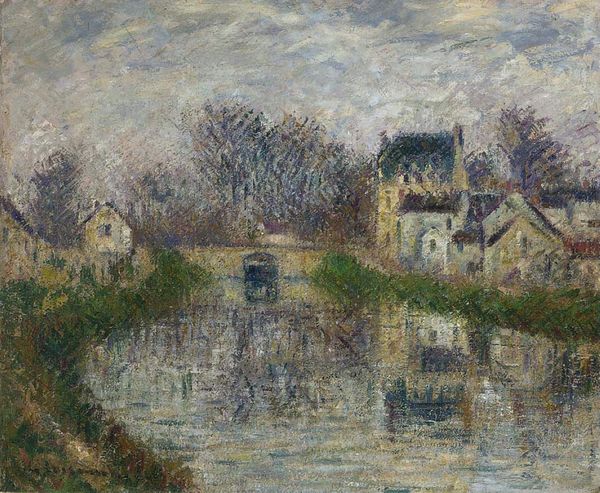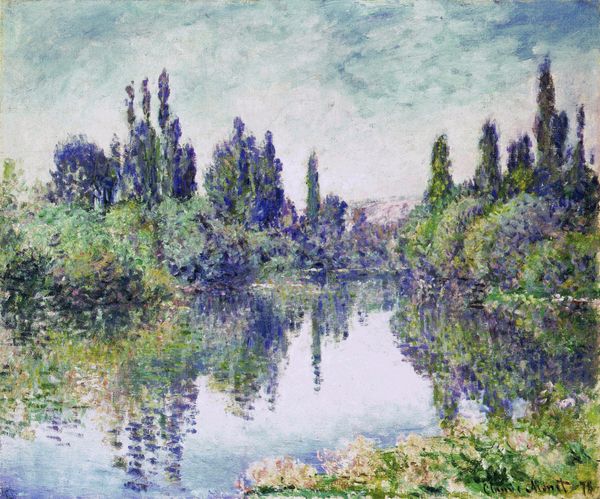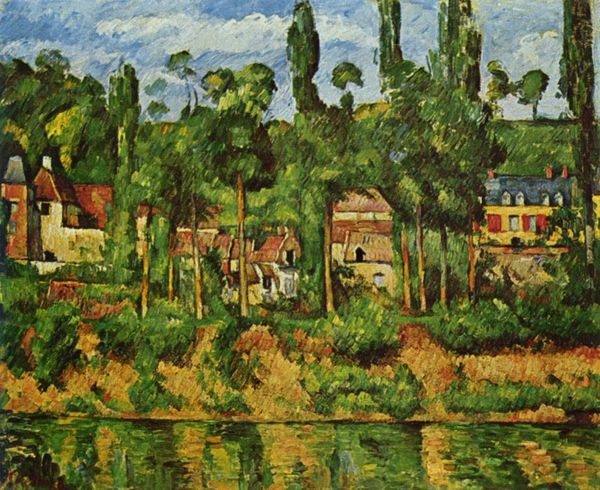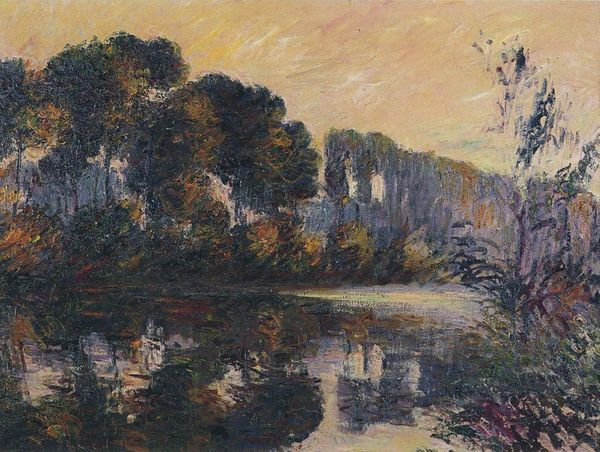
Copyright: Public Domain: Artvee
Curator: Henri Lebasque's "Le Moulin," likely painted around 1907, offers a rather serene view. It seems such an intimate reflection, doesn’t it? Editor: It does! I'm immediately struck by how incredibly still the water seems. It almost feels like the building and surrounding trees are exhaling their images, slowly and carefully, onto the surface. It has that meditative quality. Curator: Yes, a visual echo. It reminds me of the way mills, particularly those along rivers, served as hubs for communities. They were vital for trade, a place to exchange not only goods but ideas as well. I wonder, was Lebasque consciously trying to portray that in the picture? Editor: Possibly. Knowing a little more about Lebasque's connection to artists like Matisse might give it a sharper context too. One could examine how "Le Moulin" resonates or diverges from Fauvist tendencies regarding landscape painting in French history. Did Lebasque paint it to reject that movement, or to simply demonstrate an admiration for those before him? Curator: And yet it's distinctly Lebasque; he incorporates his own language of intimacy through brushstrokes that aren't overly assertive, preferring to be swallowed up and absorbed in these moments he presents, without pretense or ego. But the cultural context undoubtedly shaped its reception. Imagine seeing this displayed at the Salon d'Automne. Editor: It invites such quiet contemplation, that’s undeniable, but how would it have appeared against a period rife with its industrialization? Perhaps viewers connected "Le Moulin’s" delicate execution to anxieties about the state of nature? Curator: It might evoke the changing landscapes back then, almost like a visual elegy. Now it serves as a wonderful contrast between function and feeling—capturing both the tranquility of water and the bustling lives intertwined along it—showing an alternative reading to landscapes of his era, offering glimpses into Lebasque's mind with ease. Editor: Indeed! To me, "Le Moulin" presents this incredible duality where societal changes of its time juxtapose a personal sentiment on what nature represents. And that's a captivating tension!
Comments
No comments
Be the first to comment and join the conversation on the ultimate creative platform.
